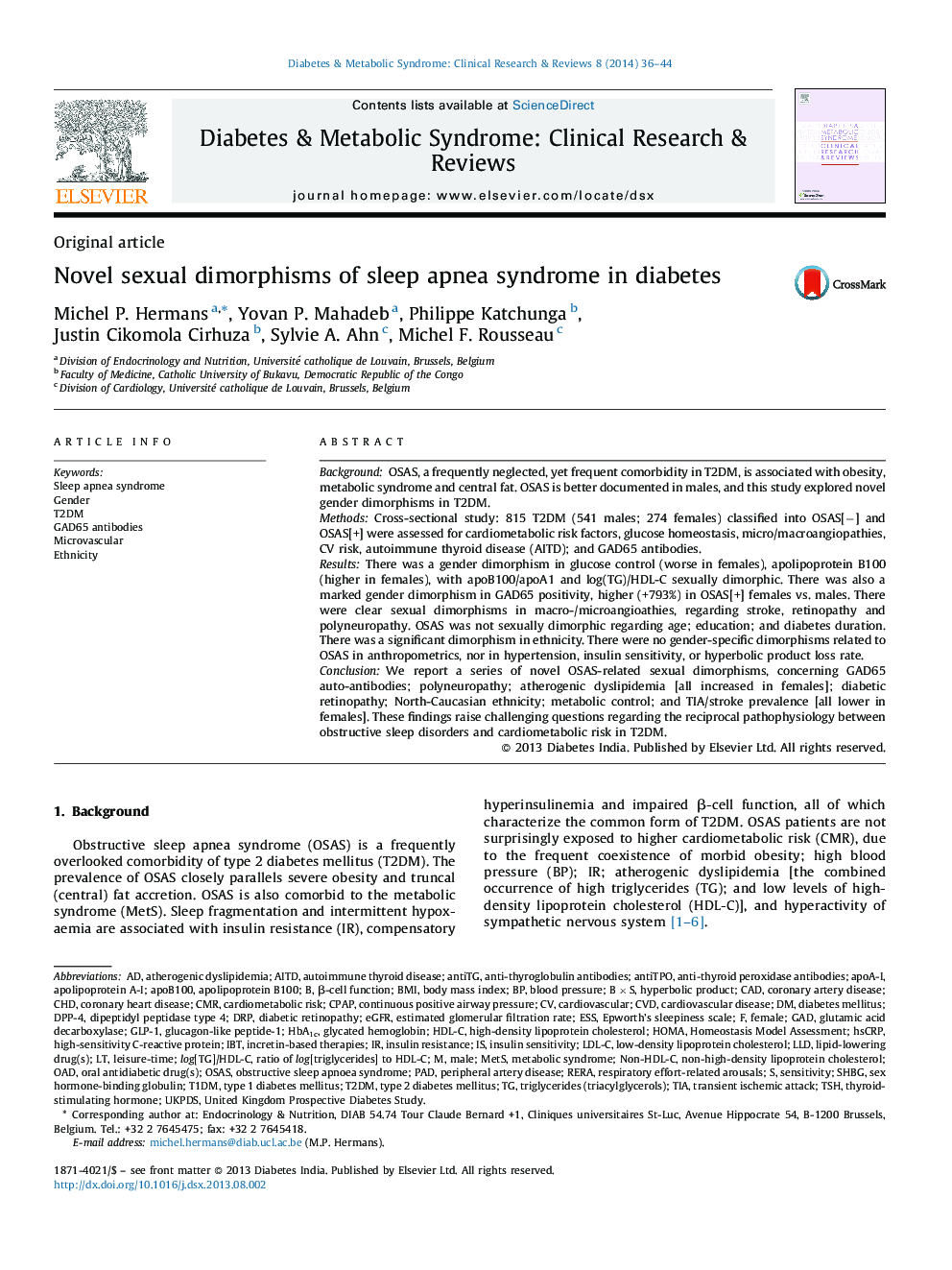| Article ID | Journal | Published Year | Pages | File Type |
|---|---|---|---|---|
| 2910214 | Diabetes & Metabolic Syndrome: Clinical Research & Reviews | 2014 | 9 Pages |
BackgroundOSAS, a frequently neglected, yet frequent comorbidity in T2DM, is associated with obesity, metabolic syndrome and central fat. OSAS is better documented in males, and this study explored novel gender dimorphisms in T2DM.MethodsCross-sectional study: 815 T2DM (541 males; 274 females) classified into OSAS[−] and OSAS[+] were assessed for cardiometabolic risk factors, glucose homeostasis, micro/macroangiopathies, CV risk, autoimmune thyroid disease (AITD); and GAD65 antibodies.ResultsThere was a gender dimorphism in glucose control (worse in females), apolipoprotein B100 (higher in females), with apoB100/apoA1 and log(TG)/HDL-C sexually dimorphic. There was also a marked gender dimorphism in GAD65 positivity, higher (+793%) in OSAS[+] females vs. males. There were clear sexual dimorphisms in macro-/microangioathies, regarding stroke, retinopathy and polyneuropathy. OSAS was not sexually dimorphic regarding age; education; and diabetes duration. There was a significant dimorphism in ethnicity. There were no gender-specific dimorphisms related to OSAS in anthropometrics, nor in hypertension, insulin sensitivity, or hyperbolic product loss rate.ConclusionWe report a series of novel OSAS-related sexual dimorphisms, concerning GAD65 auto-antibodies; polyneuropathy; atherogenic dyslipidemia [all increased in females]; diabetic retinopathy; North-Caucasian ethnicity; metabolic control; and TIA/stroke prevalence [all lower in females]. These findings raise challenging questions regarding the reciprocal pathophysiology between obstructive sleep disorders and cardiometabolic risk in T2DM.
